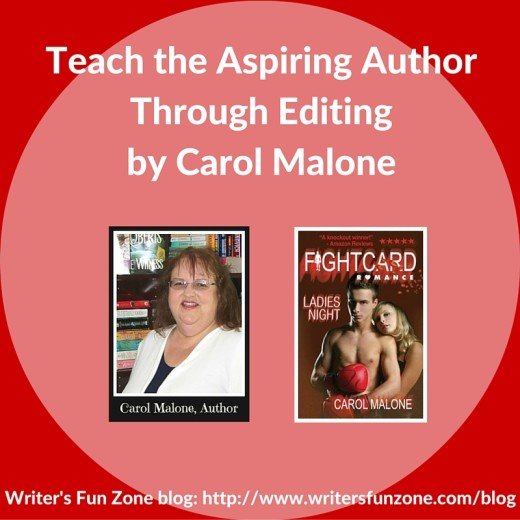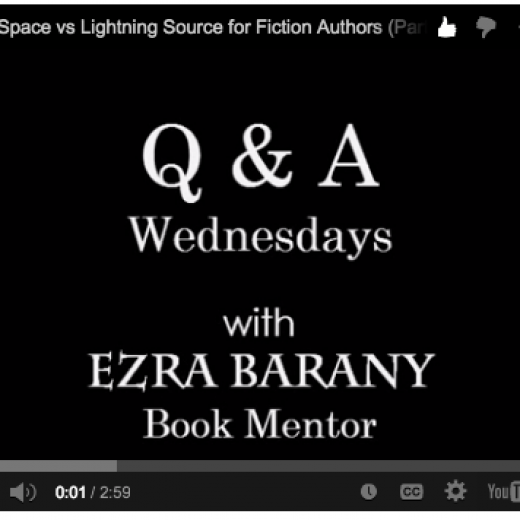The Difference Between Author Tone and Voice, And Why It’s Important To Have Both by Laurel Osterkamp
 Let’s welcome back Laurel Osterkamp as she shares with us “The Difference Between Author Tone and Voice, And Why It’s Important To Have Both.” Enjoy!
Let’s welcome back Laurel Osterkamp as she shares with us “The Difference Between Author Tone and Voice, And Why It’s Important To Have Both.” Enjoy!
***
“What’s the difference between tone and voice?”
This question was inevitable whenever I’d go over all the elements of fiction with my Creative Writing students.
And to be honest, I still find it challenging to explain the difference between these two often-interchanged elements.
What’s even more difficult to explain is why establishing tone and voice is so important, because neither element is concrete in the way that plot, character, setting, and dialogue are.
And yet, I feel it’s essential that authors understand the distinction between tone and voice, and how to use each to their advantage while creating a compelling story.
But first, what is the difference between tone and voice?
The Tone
The tone of a novel is the author’s attitude, or emotional quality, toward their writing.
Tone conveys the author’s sentiment, and can be described as formal, informal, serious, humorous, sad, ironic, and so on.
It’s an impression that the author conveys to the reader, and is composed of the words, phrasing, and overall structure of the story.
The author communicates with the reader through the use of tone, albeit indirectly. Readers must infer tone, as it cannot be stated outright.
The Voice
The voice of a novel is the author’s individual style of writing.
It’s what comes through in the author’s choice of words, style of writing, and overall structure.
Voice is the author’s personal style, and is something that cannot be taught. It is unique to each author and can take years to develop.
Why should I develop tone and voice?
Now, why is it important for authors to have a clear tone and a strong voice in their writing?
Well, a clear tone allows the reader to easily understand the emotion the author is conveying, while a strong voice helps the reader to connect with the story on a deeper level.
Without a clear tone and strong voice, the story may lack depth and struggle to engage readers.
But with a strong tone and voice, what might be an otherwise ordinary novel will stand out.
Some Examples
For some examples, let’s look at two popular novels from the 2000s: John Green’s The Fault in Our Stars, and Gillian Flynn’s Gone Girl.
These are two wildly different stories that share one common factor: strong use of tone and voice. Both authors have done a remarkable job in this area.
The Fault in Our Stars
The Fault in Our Stars is a coming-of-age love story about two teens, Hazel and Augustus, who both have cancer and find solace in one another. John Green’s tone is light yet powerful.
It is filled with humor and bright moments, while also exploring the depths of despair.
The voice of the narrator often takes on a young yet wise quality, conveying Hazel’s perspective on the world around her.
The tone of the story is often melancholic, yet never without hope.
The narrator’s words are often laced with optimism, even in moments of darkness.
For example, when Hazel and Augustus go to Amsterdam to visit the author of Hazel’s favorite book, Augustus says, “Sometimes, you read a book and it fills you with this weird evangelical zeal, and you become convinced that the shattered world will never be put back together unless and until all living humans read the book.”
This statement perfectly encapsulates the tone of the story: even in the face of tragedy, there is a spark of hope.
But in a nutshell…
Tone in The Fault in Our Stars = An unsentimental, often irreverent and always profound depiction of teen cancer.
Voice = Elevated vocabulary for a teen narrator, lots of precocious dialogue, yet still written in a way that’s accessible for a teen audience.
Gone Girl
On the other hand, Gone Girl is a psychological thriller about a man, Nick, whose wife, Amy, suddenly disappears.
Gillian Flynn’s tone is dark and edgy, filled with suspense, mystery, and deceit.
The voice of the narrator is often sinister, conveying the themes of deception and manipulation that pervade the story.
For example, when Nick is trying to figure out the truth of Amy’s disappearance, he says, “I was feeling like one of those guys who dug too deep, the kind of person who pushed his luck and paid the price.”
This statement effectively communicates the tone of the story: even when the truth appears to be within reach, it still remains elusive and dangerous.
Again, in a nutshell…
Tone in Gone Girl = A darkly humorous, psychologically provocative and enigmatic look at marriage, deceit, and violence.
Voice = Shifting first-person point of view between two unreliable narrators, each of whom rely upon metaphors and other types of figurative language to express their mental state.
Thus, the use of tone and voice in The Fault in Our Stars and Gone Girl are vastly different, yet equally powerful.
Both authors do an amazing job of creating a unique voice and tone for their stories, and in doing so, make their stories truly unforgettable.
In fact, I believe it’s the tone and voice of these two novels that distinguishes them as two of the most beloved books of the last decade or so.
How can I strengthen my tone and voice?
Unfortunately, I don’t have a magic formula for how to create strong and unique author tones and voices.
Like I mentioned earlier, this can’t really be taught.
Instead, trial, error, and lots of practice is the recipe.
But the first step is becoming aware that it’s necessary to cultivate your own author tone and voice.
Then, by mastering the distinction between the two, you’re on your way to creating stories that resonate with readers.
***
About the Author
Laurel Osterkamp is from Minneapolis, where she teaches and writes like it’s going out of style. Her short fiction has been featured in Tangled Locks Literary Journal, Bright Flash Literary Journal, and Metawoker Lit, among other places. Her latest novel Favorite Daughters was recently released by Black Rose Writing. (Click here to see the novel on Amazon.)
Social Media:
Website – https://laurellit.com
Facebook – https://www.facebook.com/authorlaurelosterkamp
BookBub – https://www.bookbub.com/profile/laurel-osterkamp







